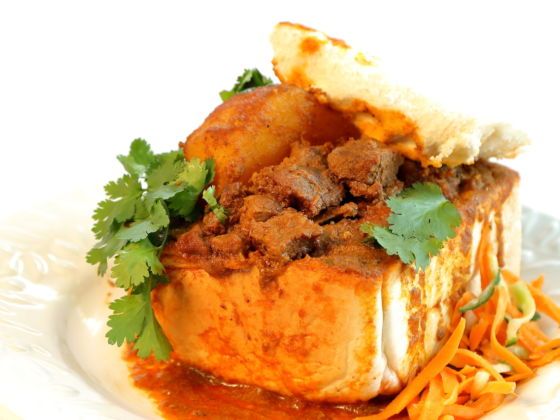No matter how many people you ask in Durban, if you’re looking for bunny chow, those in the know will always mention Hollywood Bets.
Hollywood Bets is technically a betting shop. The gambling happens downstairs — a smoke-filled hall frequented by hopeful gamblers watching sports matches and horse races on TV. It is not the sort of place you imagine going for a family lunch. But upstairs, on a surprisingly pleasant wooden deck, diners young and old gather to munch on Durban’s most famous dish.

